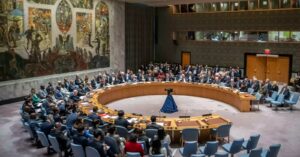The impact of climate change on food security: between deadly scarcity and devastating abundance!

Climate change is one of the most pressing and complex challenges facing humanity in the 21st century. It not only threatens natural ecosystems, but its impact extends to all aspects of life, most notably: food securityThis study examines the impact of climate change on food security, with a particular focus on the Arab region. It provides a comprehensive overview of the concepts of climate change, its manifestations, causes, and multiple impacts, then moves on to analyze the concept of food security, its basic elements, and how it is affected by climate change.
Understanding Climate Change: Manifestations, Causes, and Responsibility
The term refers to climate change To long-term shifts in temperature and weather patterns. These shifts can be natural, but since the 19th century, human activities have become the primary driver of climate change, primarily due to the burning of fossil fuels (such as coal, oil, and gas), which produce heat-trapping gases.
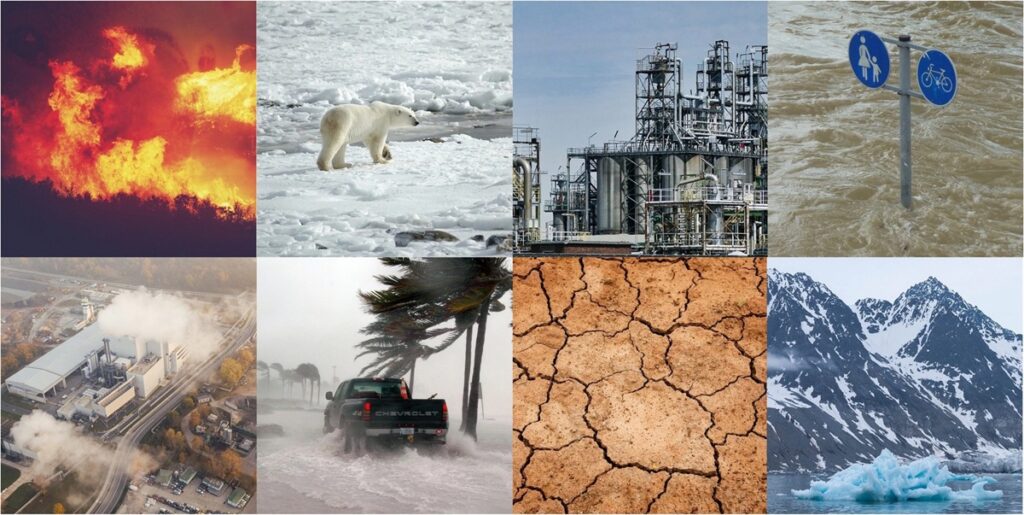
Manifestations of climate change
Climate change manifests itself in a variety of phenomena observed around the world, including:
Global warming: This phenomenon is the most prominent indicator, as global temperatures are steadily rising, leading to severe and unprecedented heat waves in various regions.
Melting ice and glaciers: Rising temperatures are causing rapid melting of glaciers at the poles and in mountainous regions, contributing to sea level rise.
Sea level rise: As a result of melting ice and the expansion of water due to rising temperatures, sea levels rise, threatening coastal cities and low-lying areas with submersion.
Changing rainfall patterns: Some areas are experiencing increased precipitation, leading to flooding, while other areas are experiencing increasing drought and lack of rain.
Increased frequency and intensity of extreme weather events: These phenomena include hurricanes, droughts, floods, sandstorms, and extreme heat waves, which have become more frequent and intense.
Ocean acidification: The ocean absorbs excess carbon dioxide from the atmosphere, making it more acidic. This negatively affects shelled marine organisms and the organisms that form coral reefs.
Causes of climate change and responsibility
The main reason behind current climate change is Human emissions of greenhouse gases, which acts as a blanket that traps heat in the Earth's atmosphere. These gases mainly include:
carbon dioxide (CO2): Mainly resulting from the burning of fossil fuels (oil, natural gas, coal) for power generation, transportation, industry, and deforestation.
Methane (CH4): It is emitted from landfills, rice cultivation, livestock farming, and fossil fuel production.
Nitrous oxide (N2O): Emitted from agricultural and industrial activities and the burning of fossil fuels.
Fluorinated gases: They are powerful industrial gases that, although emitted in small quantities, have a high capacity to trap heat.
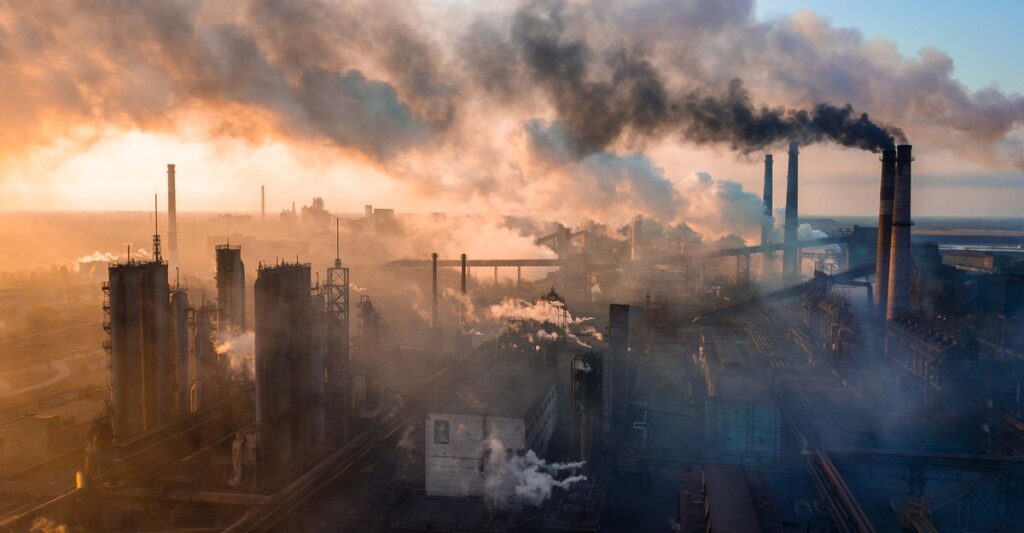
Historically, major industrialized nations are the parties most responsible for climate change. Industrialization, which began in the 18th century, has contributed to the accumulation of massive amounts of greenhouse gases in the atmosphere. Countries like the United States, the European Union, and the United Kingdom, which were at the forefront of the industrial revolution, bear a significant historical responsibility. In recent decades, major emerging economies like China and India have become significant contributors to current emissions due to their rapid industrial growth and reliance on fossil fuels.
Short-term, medium-term and long-term impacts on human life and its cost
The effects of climate change extend to all aspects of human life on planet Earth, and these effects vary in proximity and severity:
Nearby (current) effects: Increased frequency and intensity of extreme weather events, deteriorating air quality, and the spread of vector-borne diseases due to rising temperatures and changing rainfall patterns. These events lead to population displacement, infrastructure destruction, and immediate economic losses.
Intermediate effects (coming years): These impacts include increasing water scarcity, declining agricultural productivity, worsening desertification, sea level rise and coastal erosion, and increased climate migration. These impacts affect food and water security, and increase social tensions and conflicts over resources.
Long-term effects (decades and centuries to come): These include irreversible changes in ecosystems, such as the extinction of species, the collapse of coral reefs, and the melting of major ice sheets, leading to a catastrophic rise in sea levels. These impacts could lead to widespread humanitarian disasters, global economic collapse, and radical geopolitical changes.
But CostThey are enormous and growing. Direct costs include damage to property and infrastructure from natural disasters, losses in agricultural production, and health care costs associated with climate-related illnesses. Indirect costs include biodiversity loss, reduced quality of life, the costs of adapting to climate change, and the cost of potential conflicts over resources. It is estimated that the cost of climate change could reach trillions of dollars annually and significantly undermine global economic growth.
Ways to combat climate change and distribute burdens
Addressing climate change requires comprehensive, multi-level strategies, including:
mitigation (Mitigation): It aims to reduce greenhouse gas emissions into the atmosphere. This is achieved through:
Transition to renewable energy sources (solar, wind, hydroelectric).
Improving energy efficiency in industry, buildings and transportation.
Developing carbon capture and storage technologies.
Forest protection and reforestation (tree planting).
Changing farming patterns to reduce methane and nitrous oxide emissions.
AdaptationAdaptation): It aims to adapt to the inevitable impacts of climate change. This includes:
Develop infrastructure that is resilient to extreme weather events (e.g., dams, improved drainage systems).
Development of drought and heat resistant crop varieties.
Early warning systems for natural disasters.
Improving water resource management.
Urban planning that takes into account the challenges of climate change.
Distribution of the burdens of this confrontation It's a complex and controversial issue. Developed countries, historically responsible for the bulk of emissions, are expected to bear the brunt of financing mitigation and adaptation efforts in developing countries. Pledges have been made to establish financial funds to support developing countries in their climate efforts, such as the Green Climate Fund. However, disagreement remains over the extent of these commitments and how to fulfill them.
Are those responsible for his treatment paying enough? And why do developing countries?
The simple answer to whether those responsible for climate change are paying enough to address it is: noDespite international pledges and agreements such as the Paris Agreement, the pace of emissions reductions remains much slower than what is needed to limit global temperature rise to 1.5°C. Many industrialized countries are reluctant to take drastic action due to short-term economic concerns, the influence of lobby groups from the fossil fuel industry, and political challenges.
As for the question: Why are developing countries with the least pollution experiencing the greatest impact? This is due to several main reasons:
Geographical location: Many developing countries are located in geographic areas more vulnerable to the effects of climate change, such as low-lying coastal areas, arid and semi-arid regions, and cyclone-prone areas.
Limited adaptive capacity: Developing countries lack sufficient financial, technological, and human resources to build robust infrastructure, develop early warning systems, and implement effective adaptation strategies.
Reliance on climate-sensitive sectors: The economies of many developing countries depend heavily on agriculture, a sector highly vulnerable to changes in weather patterns and water scarcity.
Weak infrastructure: The infrastructure in these countries is often unable to withstand extreme weather events, increasing the extent of damage and losses.
Debt and poverty: Many of these countries suffer from high levels of debt and poverty, which limits their ability to invest in adaptation and mitigation efforts.
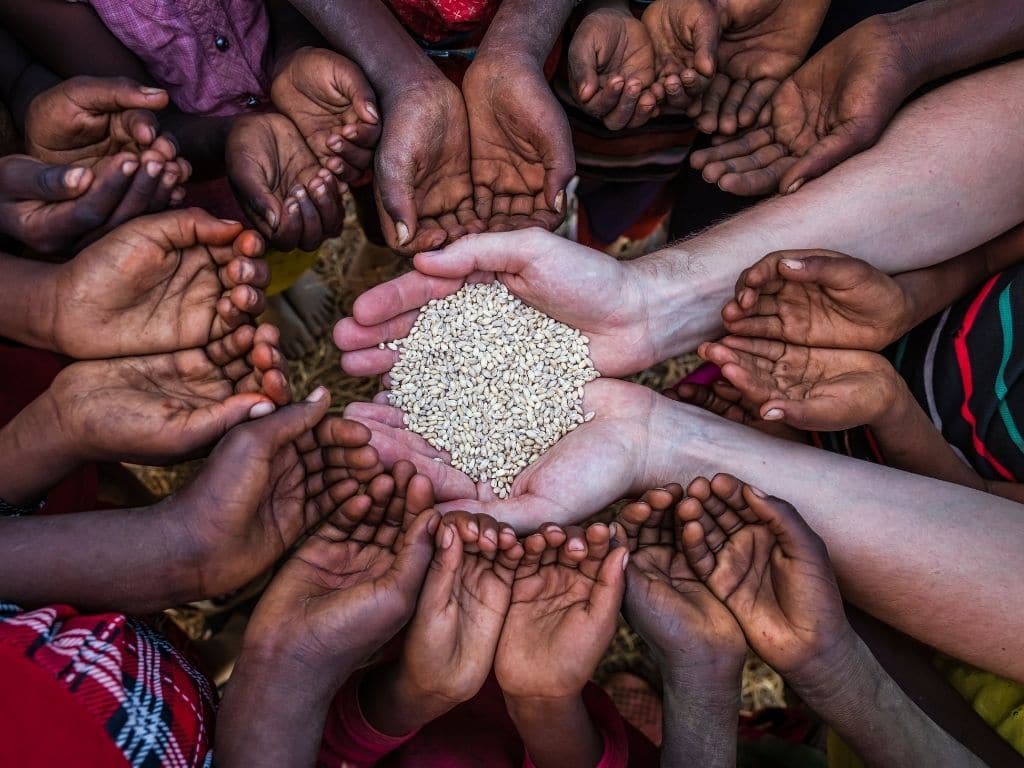
Food security: concept, elements, and impact of climate change
Defines food security It is a situation in which all people, at all times, have physical, social, and economic access to sufficient, safe, and nutritious food to meet their dietary needs and preferences for an active and healthy life. Food security is based on four essential, interconnected elements:
- Food availability (Food Availability): Refers to the availability of sufficient quantities of food through local production, imports, or food aid.
- Access to food (Food Access): It means that individuals have the economic and physical ability to obtain food, whether through purchase, exchange, or other means.
- Benefit from food (Food Utilization): It is about how the body uses food for good health, and it requires clean water, sanitation, proper health care, and knowledge of nutrition.
- Stabilizing food suppliesFood Stability): It indicates that food availability, accessibility and utilization should be stable over time, without large fluctuations or sudden shocks.
Key elements that affect food security and are affected by climate
These four elements depend on a set of vital factors, the most prominent of which are:
Water: Water is considered The most important element For agricultural production, where it is used to irrigate crops and raise livestock, water scarcity or pollution directly impacts food availability and productivity.
Soil and fertilizers: Fertile soil is essential for crop growth. Soil degradation, desertification, and nutrient deficiencies (provided by fertilizers) reduce agricultural productivity.
Improved seeds: High-quality, improved seeds play a crucial role in increasing crop yields and resistance to pests and diseases.
Agricultural infrastructure: These include irrigation networks, roads, storage facilities, and markets, and are essential to ensure that food gets from farms to consumers.
Capital and agricultural technologies: Investing in research and development, modern technologies, and agricultural machinery enhances productivity and efficiency.
Government policies: Agricultural, trade, water, and environmental policies play a pivotal role in shaping food security.
How is food security affected by climate change?
Climate change is the primary driver of many challenges facing food security, through its multiple impacts on production and distribution factors:
Impact of rising temperatures and extreme weather events:
Low agricultural yield: High temperatures cause heat stress on crops, reducing their growth and yield. They also affect plant growth cycles and can lead to significant crop losses.
Increased frequency of extreme phenomena: Floods destroy crops and submerge farmland, while droughts wipe out production and kill livestock. Severe storms cause extensive damage to agricultural infrastructure. These shocks lead to sharp fluctuations in food prices and supply shortages.
Spread of pests and diseases: Rising temperatures create a favorable environment for the spread of insect pests and plant diseases, increasing stress on crops.
Impact of water scarcity and desertification:
Water shortage for irrigation: Drought and changing rainfall patterns are leading to a severe shortage of freshwater resources available for irrigation, negatively impacting crop production, especially in areas that rely on rainfed agriculture.
Soil quality degradation and desertification: Lack of rainfall and rising temperatures lead to soil dryness and deterioration in fertility, accelerating desertification. The shrinking arable land reduces the cultivated area and, consequently, overall food production.
Impact on livestock: Water scarcity and lack of natural pastures affect livestock, reducing meat and dairy production.
Impact of environmental pollution:
Water and soil pollution: Acid rain and air pollution contaminate water sources and soil with harmful chemicals, affecting food safety and the health of consumers.
Impact on fisheries: Rising ocean temperatures, acidification, and pollution are affecting marine ecosystems, reducing fish stocks and harming the fishing industry, a major food source for millions of people.
Which of these factors is the most influential?
It is difficult to identify a single factor as the "most significant" as they are all interconnected and interact in complex ways, exacerbating the crisis. However, water scarcity, desertification, and rising temperatures are arguably the most immediate challenges threatening food security, particularly in arid and semi-arid regions, given the heavy dependence of agriculture on water and its role as the limiting factor in production in these areas. Extreme weather events, while causing significant and sudden shocks, can have an intermittent impact, while water scarcity and desertification remain persistent and worsening.
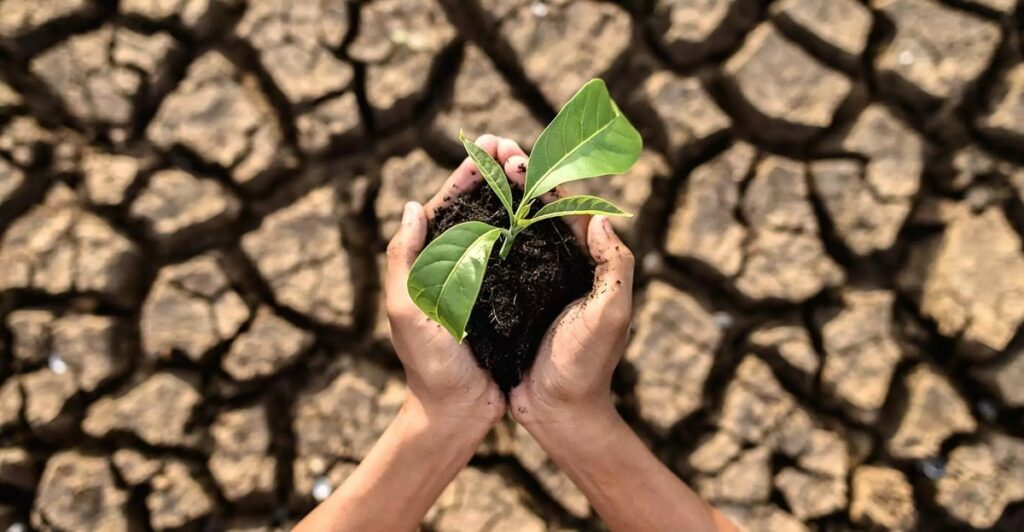
Food security in the Arab region and its impact on climate change
The Arab region is one of the regions in the world most affected by climate change and food security challenges. The Middle East and North Africa (MENA) region is characterized by geographical, climatic, and economic characteristics that increase its vulnerability to these challenges.
Characteristics of the Arab region that increase its fragility
Severe water scarcity: The Arab region is one of the poorest regions in the world in terms of per capita renewable water availability. Most Arab countries suffer from severe water stress and rely heavily on non-renewable groundwater, expensive desalinated water, and transboundary surface water.
Arid and semi-arid climate: Deserts cover a large part of the region and are characterized by low and variable rainfall and high temperatures.
Dependence on food imports: Most Arab countries import a significant portion of their basic food needs (especially grains), making them vulnerable to global price fluctuations and disruptions in supply chains.
Rapid population growth: The population in the region is growing steadily, increasing the demand for food and water.
Conflicts and instability: Some countries in the region suffer from internal conflicts and political instability, which hinders development efforts and exacerbates food and water security problems.
Weak agricultural infrastructure: In some countries, agricultural infrastructure remains inadequate, limiting the efficiency of production and distribution.
The impact of climate change on food security in the Arab region
The above challenges are exacerbated by climate change, which significantly threatens food security in the Arab region:
Increasing water scarcity: Rising temperatures and declining rainfall are expected to significantly exacerbate water stress. This will impact irrigated and rainfed agriculture, reduce groundwater reserves, and increase the cost of desalination.
Exacerbation of desertification and land degradation: The region will witness increased desertification and degradation of arable land as a result of rising temperatures, drought, and increased sandstorms.
Impact on agricultural production: Yields of staple crops such as wheat and barley will decline, widening the food gap and increasing dependence on imports. Livestock will also be negatively affected.
Extreme weather phenomena: The region will experience an increase in severe heat waves, prolonged droughts, and flash floods, causing significant losses to crops and agricultural infrastructure.
Sea level rise: Sea level rise threatens fertile deltas (such as the Nile Delta) and low-lying coastal areas, leading to soil salinization, loss of agricultural land, and population displacement.
Supply chain disruption: Climate change could impact global food production, leading to higher food prices and significantly impacting importing Arab countries.
Migration and conflicts: Deteriorating food and water security could exacerbate internal and international migration, and increase tensions and conflicts over scarce resources.
Areas most threatened by food security
Countries and regions already experiencing severe water scarcity, relying heavily on rainfed agriculture, and lacking sufficient resources to adapt are likely to be most at risk. In the Arab region, these areas could include:
Maghreb region (Algeria, Morocco, Tunisia): It suffers from increasing droughts and decreased rainfall, affecting grain and vegetable production.
Near East (Jordan, Syria, Iraq, Palestine, Lebanon): It faces severe water scarcity, environmental degradation, and conflicts that affect its ability to achieve food security.
Horn of Africa (Sudan, Somalia, Djibouti): These countries frequently suffer from drought and famine due to scarce rainfall and conflict.
Gulf countries: Despite having significant financial resources, it is almost entirely dependent on food imports and desalinated water, making it vulnerable to external shocks.
conclusion
Climate change is an existential challenge threatening global food security, particularly in the Arab region, a hotspot for these challenges. A deep understanding of the manifestations, causes, and multiple impacts of climate change, along with a comprehensive analysis of the components of food security and how they are affected by climate factors, is a first step toward formulating effective strategies.
The only way to meet this challenge lies in a combination of ambitious emission mitigation, effective adaptation to inevitable impacts, enhanced international cooperation, and investment in innovative solutions. Countries historically responsible for emissions must fulfill their financial and technological commitments to developing countries, which bear the greatest burden of this pollution, despite contributing the least to it.
Ensuring food security for future generations in the Arab region and the world requires a radical shift in our approach to agriculture, water, and energy, placing environmental protection at the heart of all development policies. Are we ready to shoulder our collective responsibility and take the necessary action before it's too late?

